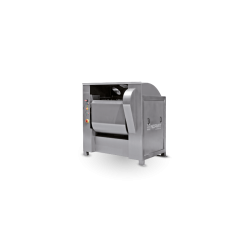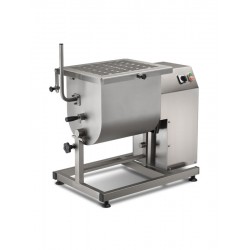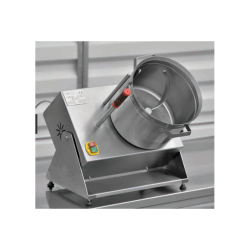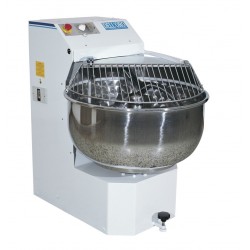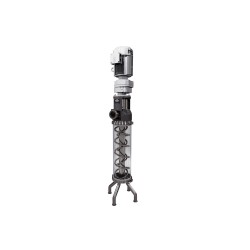
- Nuovo
Powder Granulation
TURBO MIXER GRANULATOR
Descrizione
Granulating is the process of turning small primary particles of raw material, or a heterogeneous mixture of fine powder into uniform granulate of a larger size and higher density, which possesses correct fluidity and compressibility. The size of the agglomerate normally ranges from 0.1 to 2 mm in size.
Powder granulation gives the raw materials and finished products the following advantages:
- An increase in particle size.
- Improved fluidity.
- Improved solubility.
- Prevention of dust volatility.
- Improved appearance.
- Prevention of raw material separation during handling, transportation etc.
The MIC machines are used by many industries to turn raw materials and/or finished products into granules.
The excellent mixing process permits perfect homogeneity, meaning that each granule is an independent unit at the end of the granulation process.
If humidification with large amounts of agglutinating solution is required, then a drying process must be added to the mixing and granulating process. The drying would then take place within a fluid bed dryer, such as the ESSICA model manufactured by COMASA.
Features
PC with colour Touch-panel screen.
Smart raw material ID.
Smart operator ID.
Process editing system for each product.
Vacuum filling system.
Agglutination injector vessel.
Peristaltic pump with volume control.
Automatic cut-off by means off torque measurement.
Curve tracing.
Printed reports.
Remote on-line help.
Automatic cleaning system.
Electrical system in accordance with ATEX rules.
IN WALL/recessed installation.
Manufactured according to GMP guidelines.
Software in accordance with FDA 21 CFR part 11.
FAT/SAT validation documents.
CHARACTERISTICS OF MIC GRANULATOR
A – Densification Curve: an Experimental Method
The powders are mixed with the impeller, in order to obtain a uniform mix. Then the speed is reduced and humidification occurs by means of spraying the agglutinate.
Once this stage is finished, the speed is increased to speed up granulation.
If excessive time is taken, over-agglutination and loss of torque occurs and therefore the quality of the granulate is compromised.
184 altri prodotti della stessa categoria:
- Nuovo
- Nuovo
- Nuovo
- Nuovo
- Nuovo
- Nuovo
- Nuovo
Continuous drum coating machine for adding spices and flavors AD
- Nuovo
- Nuovo
- Nuovo
- Nuovo
- Nuovo

 English
English
 Deutsch
Deutsch
 Français
Français
 Español
Español
 Italiano
Italiano
 Português PT
Português PT































